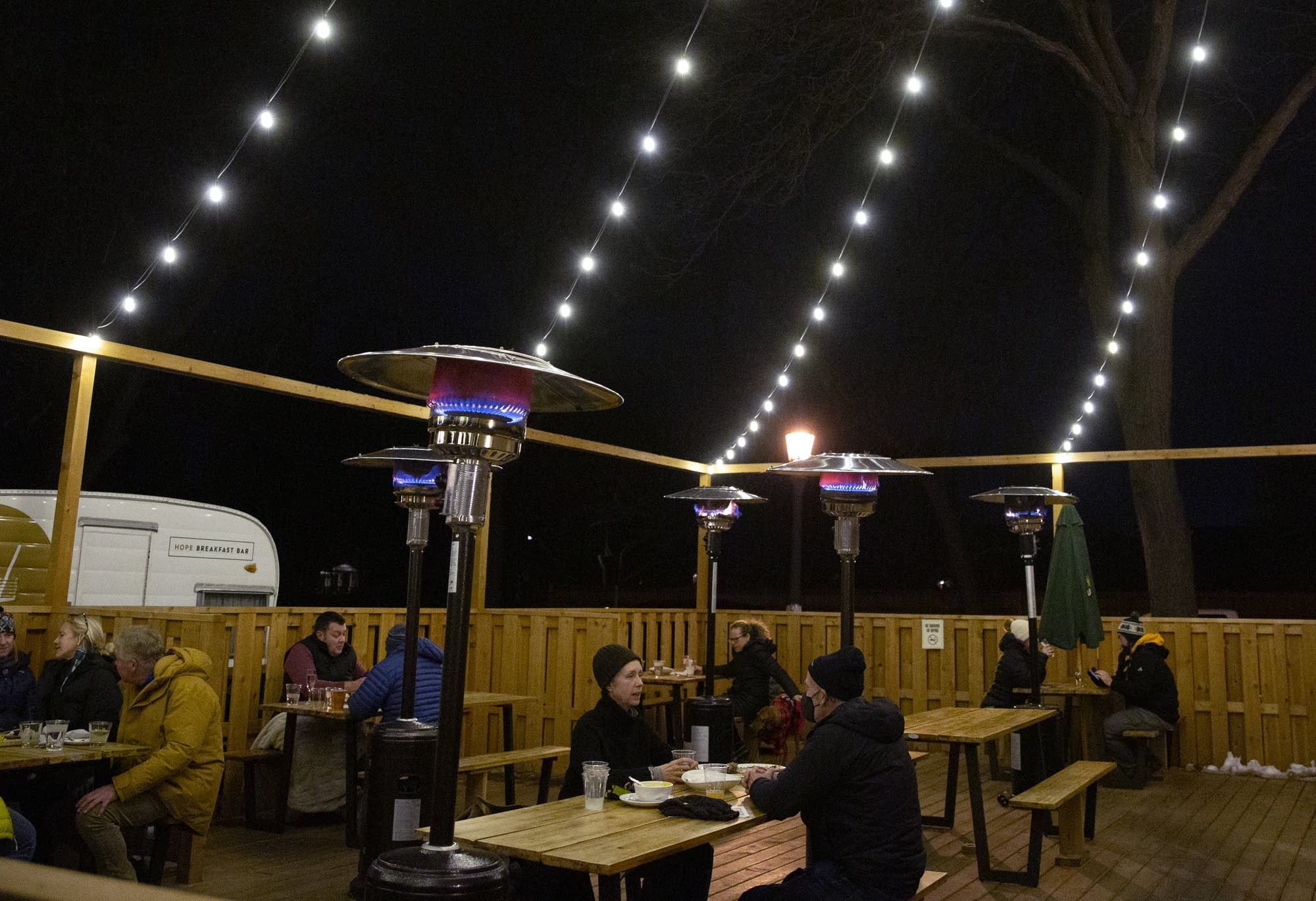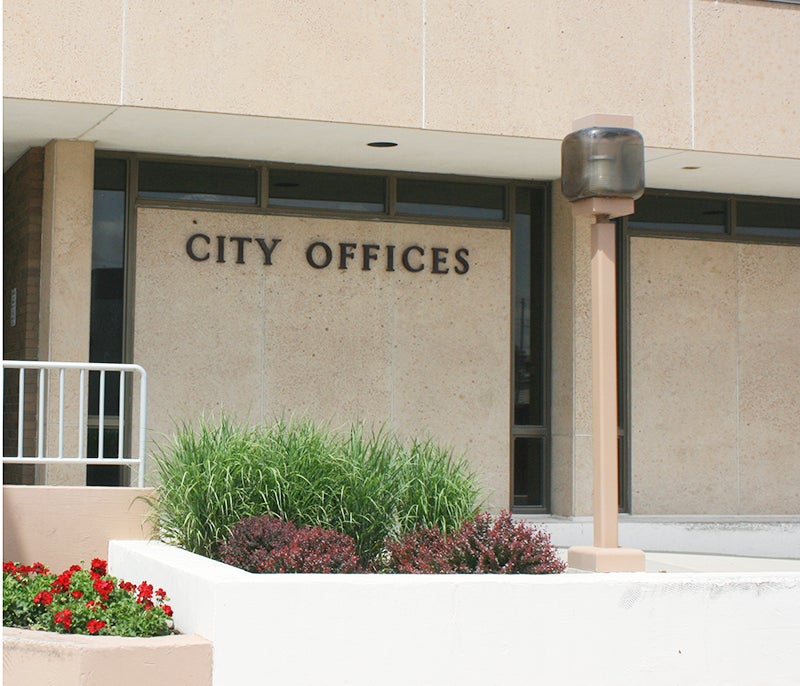What you need to know about Minnesota’s new rules
Published 7:55 am Thursday, November 19, 2020

- Diners eat under heaters on a patio in November 2020 at The Gnome restaurant in St. Paul. Christine T. Nguyen/MPR News
|
Getting your Trinity Audio player ready...
|
By Sara Porter and Dan Kraker, Minnesota Public Radio News
As Minnesota’s COVID-19 cases continue to surge, Gov. Tim Walz has rolled out new curbs intended to stem the “uncontrolled community spread” of the disease over the next four weeks.
Most prominently, the state is telling Minnesotans not to gather with anyone outside of their immediate household, just a week before the Thanksgiving holiday.
In addition: Indoor and outdoor dining will be prohibited, limiting restaurants and bars to takeout service only. Public pools, rec centers, gyms, fitness and dance studios and indoor entertainment venues like theaters and bowling alleys will also be closed.
Wedding receptions, celebrations and private parties are also not allowed under the new orders, though wedding ceremonies, funerals and other religious events are allowed if they follow current capacity and social distancing rules.
The order also puts organized sports — for youth and adults — on pause, but allows professional and college sports to continue, under certain restrictions.
Retail, salons, places of worship, other activities will operate under restrictions already in place.
What will this mean for your day-to-day life? Here’s what you need to know.
And if we’ve missed something: Let us know. Share your questions here, and we’ll track down the answer. We’ll continue to update this FAQ as new questions — and answers — arise.’
What do these new rules cover?
The most notable new restriction is a prohibition on social gatherings among people who are not members of the same household — even if social distancing can be maintained.
This includes indoor and outdoor gatherings, both private and public.
A number of businesses and gathering places will also be closed to the public, including:
- Restaurants, bars, coffee shops, tobacco product shops
- Public pools, gyms, fitness and rec centers, indoor sports facilities, indoor and outdoor exercise facilities, martial arts facilities, dance and exercise studios
- Theaters, concert halls, festivals, vendor fairs, museums, performance venues, stadiums, arcades, bowling alleys
- Youth and adult sports activities have also been suspended for the next four weeks.
When do the rules take effect — and how long will they last?
The new rules are set to last four weeks.
They will kick in at the close of business Friday, Nov. 20. That means the dine-in prohibition will begin the next day: Saturday, Nov. 21. Gym closures will kick in at midnight on Friday.
The new rules will last until Dec. 18. When asked about what Minnesotans can expect as the rules are set to expire, Walz said only that the data will drive the state’s decision-making.
What’s not covered under the order?
A few industries that were closed or were limited in their operations during the state’s ”stay safe” order this spring will remain open under these new orders, but will still be subject to the capacity and social distancing restrictions they’ve been operating under for months:
- Takeout and delivery operations
- Grocery stores
- Retail stores
- Places of worship
- Beauty salons and personal care services
- Schools and child care providers will remain open according to their district’s safe learning plan, and outdoor recreation is allowed, as long as people participate only with members of their household.
Is this a pause? A shutdown? Or something else entirely?
Walz is calling this a four-week “dial-back” on certain activities.
While he acknowledges the new restrictions are “significant and difficult,” he said this new set of rules is not the same as the “stay-at-home” orders that he issued in March.
Why is this happening now?
Minnesota is hitting a crisis point in its COVID-19 spread.
“It took us 29 weeks to get the first 100,000 cases. It took only the next six weeks to get to 200,000 cases. And it’s going to take less than three weeks to get to 300,000,” Walz said as he announced the new restrictions Wednesday.
The state continues to break record upon record in its daily COVID-19 updates — in case numbers, hospitalizations and deaths. And there’s no sign of slowing.
In the meantime, Minnesota’s hospital system and workers are buckling under the flood of cases, and simply cannot handle the influx of patients. At the same time, more and more medical staff are having to stay home from work, because they have the virus, have been exposed to the virus or are taking care of someone at home who’s experienced either.
And state officials are concerned that the current spike in cases will soon translate to similar spikes in hospitalizations, intensive care admissions and deaths.
They said the new measures are intended to tamp down our current rate of unabated community spread, and put the state in a better position to have the capacity to continue to care for sick patients.
If the current spread is left unchecked, one model suggests Minnesota could hit 20,000 new cases per day by the start of the new year, Health Commissioner Jan Malcolm told reporters.
“Two weeks ago, I thought a 5,000-case day was horrific,” she said. “Now, that looks like a good day.”
What about social gatherings?
Social gatherings of almost any kind are now prohibited, having been identified as one of the main sources of COVID-19 transmission in the current outbreak.
That applies to gathering with anyone outside your immediate household, indoors or outdoors, planned or spontaneous.
Exceptions include:
- Workers and customers at a business, as long as they’re following relevant safety requirements
- Education settings and care services for children
- Care visits to family, friends or pets from another household
- Health and safety activities, like seeking care or giving blood
- Sobriety and mental health support groups
- Health care and residential facilities — though visits to long-term care may not be permitted under individual facilities’ regulations
- People experiencing homelessness
- People moving, either to a new home or out of a dangerous situation
- Governmental meetings
- State court proceedings
- Weddings, funerals and religious services — but restrictions must also be followed, and gatherings after services are prohibited
- Outdoor activities — but any activities that put people in close contact with other households are prohibited
- Drive-in gatherings
- Tribal activities and lands
Does this apply to events inside and outside?
For the most part, outdoor activities are restricted to the same degree as indoor activities. Get-togethers with people outside your immediate household, for example, are prohibited both inside and outdoors.
Restaurants aren’t allowed to offer dining inside or outside.
But under the new rules, people can still participate in activities like hiking, biking, picnicking, skiing and hunting with people from other households — but only if they maintain 6 feet of separation.
And groups within a single household may take part in activities that don’t allow for social distancing — like hockey or basketball.
Can I still order takeout?
Yes! While bars and restaurants will be closed to in-person service, they will still be allowed to offer takeout, delivery and walk-up or drive-through service.
Businesses may permit up to five members of the public inside at a time to pick up their orders.
What are the new rules for sports?
Youth and adult sports programs that are organized by schools, clubs or other groups must stop all in-person activities, including practices, group workouts, games and tournaments when these rules go into effect.
This includes sports offered by the Minnesota State High School League, as well as dance, cheerleading, and other sports offered by organizations outside schools.
This does not include programs offered by child care providers, or participation in sports or recreational activities within a single household. It also does not apply to college or professional sports.
Can I travel out of state?
The new rules recommend “that Minnesotans refrain from unnecessary out-of-state travel” for the next four weeks, but do not forbid it.
The state Health Department has traced more than 16,000 cases to out-of-state travel since the pandemic began, and neighboring states — the Dakotas, Iowa and Wisconsin — have some of the fastest-growing infection rates in the country. If someone does decide to travel, the state recommends that they self-quarantine for 14 days upon their return.
This recommendation does not apply to people who must cross state lines for work, study or to seek medical care.
What about major life and religious events, like weddings and funerals?
Wedding ceremonies and funeral services are still allowed, provided facilities adhere to restrictions already in place that limit occupancy to no more than 50 percent of capacity, with a maximum of 250 attendees, in indoor or outdoor spaces.
However, beginning on Nov. 20 at 11:59 p.m., celebrations, receptions, private parties or other social gatherings connected to weddings and funerals are not allowed.
Virtual alternatives are also strongly encouraged.
How will these rules be enforced?
As with past orders, Walz is urging Minnesotans to voluntarily comply with these new rules.
“I’m not going into someone’s house on Thanksgiving,” Walz said. “I’m just begging people and asking them. We know what works. We know we can make a difference.”
According to the language of the order, anyone who violates it is guilty of a misdemeanor, and could face a fine of up to $1,000, or up to 90 days in prison.
Business owners or supervisors who require or encourage employees to violate the order could be found guilty of a gross misdemeanor, fines of up to $3,000, and imprisonment of up to a year.




